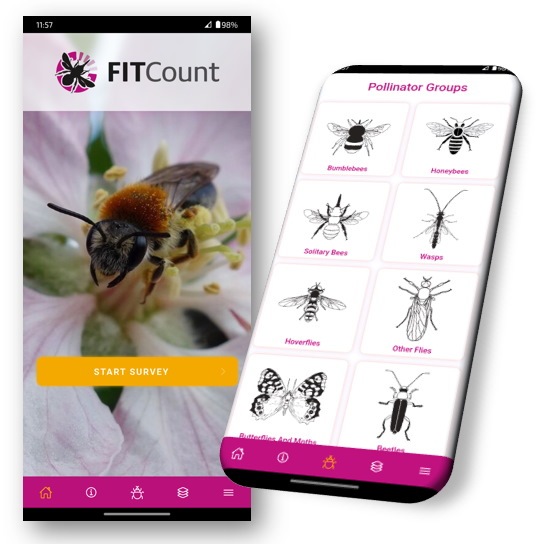FIT Counts are very simple – you watch a patch of flowers for 10 minutes and count how many insects visit. It is a very useful tool for individuals, community groups and others to measure change in their local biodiversity. If you’ve taken action as part of the All-Ireland Pollinator Plan, carrying out FIT Counts throughout the year and across future years will help track the impact of your actions on insect numbers and diversity.
The easiest way to carry out a FIT Count is to use the FIT Count app (details below).



